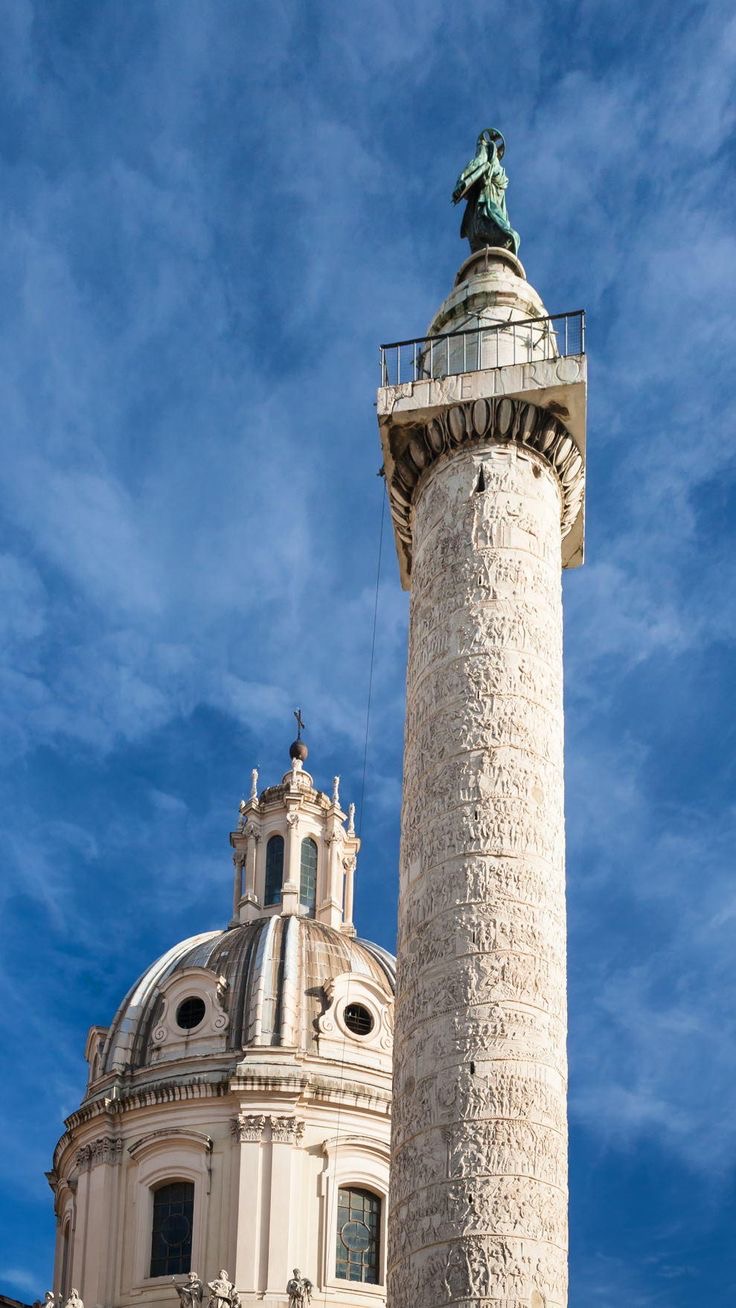Trajan’s Column, erected in 113 CE, stands in Trajan’s Forum in Rome and is a commemorative monument decorated with reliefs illustrating Roman emperor Trajan’s two military campaigns in Dacia (modern Romania). The column was the first of many such monuments and it is also an invaluable source of information on the Roman Army and a lasting testimony to the Roman love of monumental architecture constructed to celebrate military victories and Roman leaders.
The column stands 38 m tall (125 ft) and consists of 19 drums of Italian white marble. It stands on an 8-block base and is topped by a two-block pedestal. Originally, a 4.8 m (16 ft) bronze statue of Trajan stood on the top pedestal but this was replaced by a statue of St. Peter in 1588 CE. The column was in all likelihood conceived by Trajan’s architect Apollodoros of Damascus as a commemoration of the emperor’s victorious Dacian campaigns of c. 101-2 and 105-6 CE. On the Emperor’s death in 117 CE his ashes were buried within the foundations of the column The irregular perspective and presence of over 2,600 figures carved in low relief spiralling around the column create a lively 200 m long narrative of 155 key scenes from the campaigns in Dacia with Trajan himself present in many diverse situations such as leading the army, judging prisoners, and holding councils of war. The two campaigns, starting from the base, are presented in an approximate chronology of major events and each campaign is separated by a scene with a shield and victory trophies.


Comment (0)